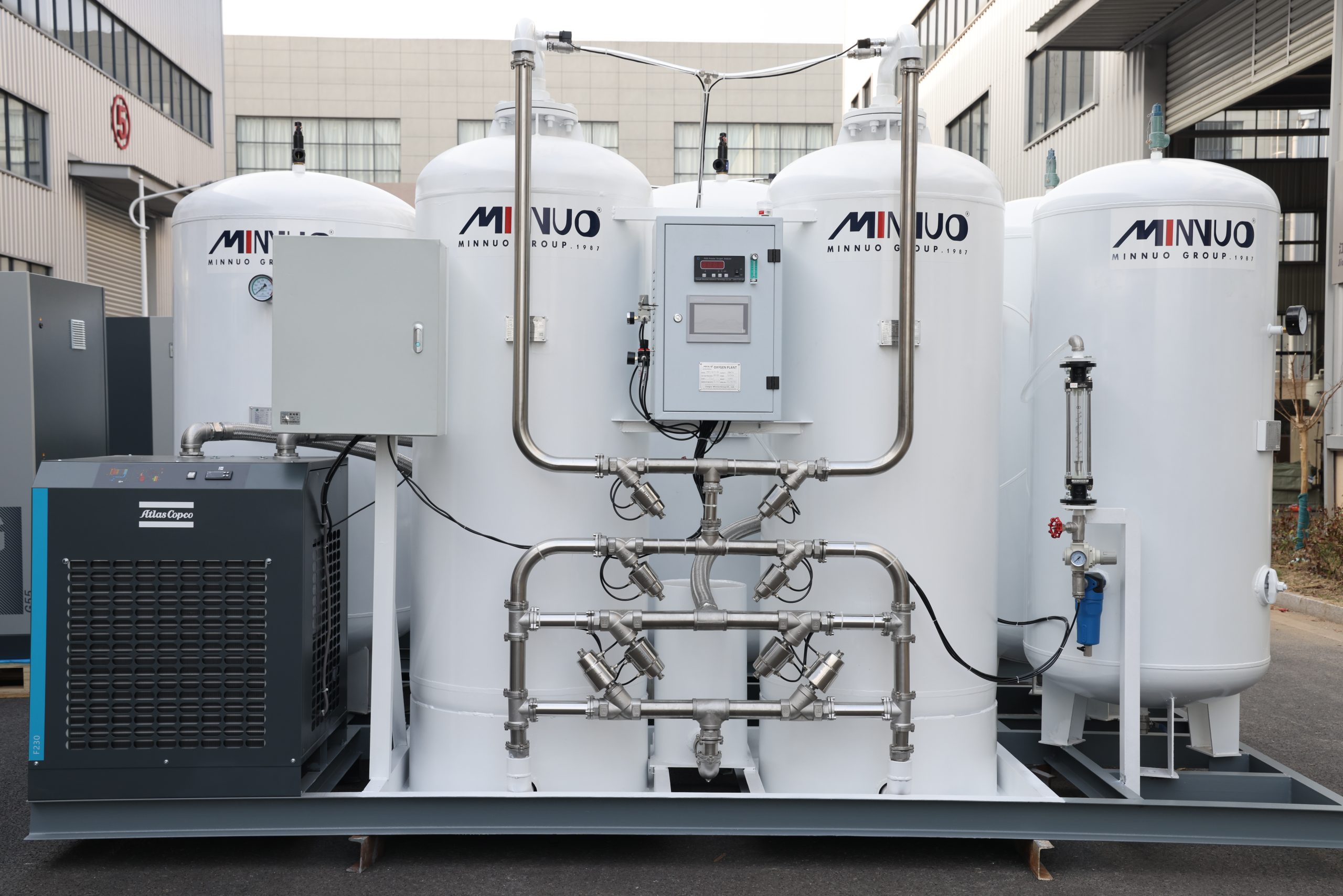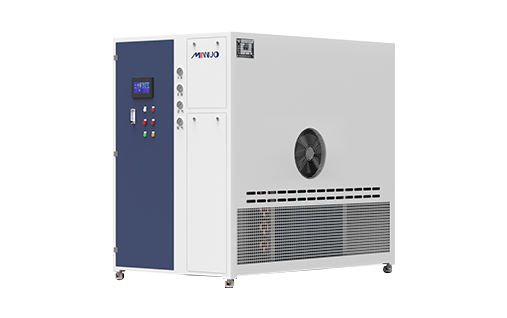Ozone treatment technology has become one of the important tools in the sewage treatment industry to improve water quality and achieve efficient purification. As sewage treatment requirements become increasingly stringent, ozone’s strong oxidation properties and rapid sterilization capabilities provide a powerful means for sewage treatment plants. This article will discuss in detail the working principle of ozone generators, specific application processes in sewage treatment, treatment advantages, practical application cases, technical challenges faced and future development trends.
Ozone generators use their strong oxidation and sterilization effects to enable sewage treatment plants to efficiently remove organic pollutants, color and odors, and significantly reduce the content of pathogenic microorganisms. This technology is widely used in municipal sewage, industrial wastewater and water reuse treatment. It improves water quality through powerful oxidation, reduces the use of chemical agents, and achieves environmental protection and economic benefits. In the future, with the improvement of ozone generator efficiency and the optimization of intelligent control systems, ozone treatment will become an important support for sustainable management of water resources.
Working principle of ozone generator
Ozone (O₃), as a strong oxidant, can quickly oxidize organic pollutants and pathogenic microorganisms in sewage. Ozone generator is a device used to prepare ozone. Commonly used preparation methods include corona discharge method and electrolysis method. The corona discharge method uses a high-frequency and high-voltage electric field to split oxygen (O₂) into single oxygen atoms, which are then combined to form ozone molecules (O₃). This method has high ozone yield and low cost, and is currently the mainstream industrial ozone production technology.
The ozone gas generated by the ozone generator is injected into the sewage to be treated through a diffusion device. Ozone generates free radicals (such as hydroxyl radicals) with stronger oxidizing ability in the water, which can quickly decompose organic matter, remove color, eliminate odor, and kill Pathogenic microorganisms in water. This powerful oxidation reaction can significantly improve water quality in a short time and is an indispensable step in the sewage treatment process.

Ozone treatment process in sewage treatment plants
In order to achieve efficient purification, ozone treatment technology is generally combined with other steps of sewage treatment to form a scientific and rigorous process:
Preliminary preprocessing
Before entering the ozone reactor, sewage usually undergoes pretreatment steps such as sedimentation and filtration to remove impurities such as large suspended solids and grease. This step can significantly reduce ozone consumption, improve treatment efficiency, and ensure that ozone action focuses on the removal of organic matter and microorganisms.
ozone oxidation reaction
The pretreated sewage flows into the ozone reactor, and the ozone fully contacts the sewage through the diffusion equipment to cause an oxidation reaction. During this process, the hydroxyl radicals generated by the cracking of ozone molecules have a stronger oxidation effect on pollutants, which can decompose complex organic pollutants into small molecules that are easy to handle, and at the same time reduce the color and smell of sewage. Efficient ozone oxidation can greatly improve treatment effects and reduce reliance on subsequent treatment steps.
Biological post-processing
After ozone oxidation, organic pollutants in the water are decomposed into low-molecular substances that are easily biodegradable, which helps the subsequent biological treatment process to further remove pollutants. Therefore, ozone treatment is usually used in combination with activated sludge methods, biofilm reactors, etc., which can further remove residual pollutants such as organic carbon, nitrogen, and phosphorus in sewage, improve effluent water quality, and ensure that discharge standards are met.
Final disinfection and discharge
The strongly oxidizing ozone molecules and their derivatives produced during the ozone oxidation process can effectively kill bacteria, viruses and other pathogenic microorganisms in the water body, ultimately ensuring that the effluent meets disinfection standards or providing safety guarantee for recycled water. The ozone-treated sewage can be discharged directly or undergo subsequent advanced treatment for agricultural irrigation or industrial reuse.
Advantages of ozone in sewage treatment
As a strong oxidant, ozone has demonstrated significant advantages in sewage treatment, especially in the efficient removal of pollutants and improvement of water quality:
Strong oxidizing property
Ozone is one of the most powerful oxidants currently known and can rapidly oxidize most organic pollutants at low concentrations. It is especially suitable for refractory harmful substances such as antibiotics in pharmaceutical wastewater and dyes in chemical wastewater. wait. In addition, the hydroxyl radicals generated by ozone react more rapidly and can oxidize harmful pollutants in a short time.
Remove color and odor
Color and odor in sewage are usually caused by organic pollutants. Ozone can effectively remove color during the oxidation process and improve the visual and olfactory quality of the water body. This is particularly important for municipal sewage treatment plants, where clear and odorless effluent helps improve public acceptance.
Broad spectrum sterilization and disinfection
Ozone can quickly destroy the cell membranes and proteins of bacteria, viruses and other microorganisms, and has a significant sterilization effect. It is especially suitable for sewage treatment with high pathogenic microorganism content. Unlike traditional chlorine disinfection, ozone treatment does not produce harmful by-products, does not produce residual pollution, and the treated water quality is safer.
Reduce chemical use
The disinfection steps of traditional sewage treatment usually use a large number of chemicals (such as chlorine, chloramine, etc.). Ozone’s efficient sterilization effect allows it to replace chemical disinfection in most cases, thereby reducing harmful chemical residues and further reducing the water body the risk of secondary pollution.

Application cases:
Municipal sewage treatment plant
Many municipal sewage treatment plants use ozone treatment as an important measure to improve water quality and enhance effluent standards. Through ozone oxidation, the organic matter in the sewage is efficiently decomposed, the color and odor are effectively removed, the transparency of the effluent quality is significantly improved, and the sensory quality is greatly improved. In addition, ozone treatment kills pathogens in wastewater and helps improve the overall hygiene and safety standards of wastewater plants.
Industrial wastewater treatment
Industrial wastewater discharged from petrochemical, pharmaceutical, textile printing and dyeing and other industries usually contains high concentrations of organic pollutants and toxic substances that are difficult to degrade. Ozone treatment can play a significant detoxification role in these complex wastewaters. Through powerful oxidation, harmful substances are converted into low-toxic and easily degradable small molecular compounds, creating conditions for subsequent biological treatment and advanced treatment. In recent years, more and more industrial enterprises have chosen ozone treatment technology to comply with environmental protection requirements and save subsequent treatment costs.
Wastewater reuse and treatment
The increasing shortage of water resources has gradually made wastewater reuse a trend. Sewage reuse requires high effluent quality, especially disinfection and no residual chemicals. Ozone technology plays a particularly prominent role in sewage reuse. Ozone oxidation can not only remove organic pollutants, color and odors, but also kill pathogenic microorganisms, ensure the hygiene and safety of reused sewage, and ensure its suitability for industry and agriculture. etc. purposes.
Environmental protection and economic benefits of ozone treatment
Ozone treatment technology not only has significant advantages in sewage purification, but also shows good prospects in terms of environmental protection and economic benefits:
Economic benefits
Although the initial investment of an ozone generator is high, ozone treatment does not require a large amount of chemical agents in long-term operation, which reduces the cost of agent procurement and use, and reduces the treatment cost. At the same time, the high efficiency of ozone treatment enables it to quickly remove pollutants, shorten the overall treatment time, and improve the operational efficiency and treatment capacity of the sewage plant.
Environmental benefits
Unlike chemical disinfectants, ozone only produces oxygen after decomposition without any harmful residues or by-products, making it a green and environmentally friendly water treatment method. The application of ozone treatment helps reduce chemical residues in water bodies, is environmentally friendly, and further achieves sustainable utilization of water resources.
Reduce greenhouse gas emissions
Ozone treatment technology can reduce the need for chemical agents, reducing energy consumption and carbon emissions during the production and transportation of chemicals. In addition, ozone treatment technology increases the dissolved oxygen content in wastewater, which helps improve the self-purification ability of water ecology and improves the surrounding environment.

Challenges and future development directions of ozone technology
Despite the superior performance of ozone treatment in wastewater treatment, there are still some challenges in practical applications. First, the energy consumption of ozone generators is high, and the ozone preparation process consumes a large amount of electricity, resulting in increased operating costs. Secondly, ozone generation equipment is prone to wear and tear under long-term high-load operation and requires regular maintenance to ensure treatment effects and equipment life.
To address technical challenges in ozone treatment, researchers are working to improve the energy efficiency of ozone generators and reduce operating energy consumption. The introduction of new technologies such as low-voltage corona discharge and plasma electrolysis may help reduce the cost of ozone generation. The development of intelligent control technology is equally important, as it can intelligently adjust the generation of ozone according to the pollution load of sewage, optimize treatment effects and reduce costs.
In the future, the ozone treatment process is expected to be integrated with activated carbon adsorption, membrane filtration and other technologies to achieve more efficient and low-cost sewage purification solutions and further promote the sustainable use of water resources.
Conclusion
Ozone treatment technology provides efficient and environmentally friendly purification methods for sewage treatment plants. With its strong oxidation and sterilization effects, ozone generators not only show excellent results in municipal sewage and industrial wastewater treatment, but also lays a technical foundation for the regeneration and utilization of water resources. In the future, with the advancement of technology and equipment optimization, ozone generators will continue to promote the green and intelligent development of the sewage treatment industry, providing strong support for the realization of sustainable water resources management.The ozone generators produced by MINNUO are very popular among consumers. Many customers have reported that our energy-saving technology is very advanced and has greatly helped their environmental protection cause.






 sales2:+86 17506119168
sales2:+86 17506119168

